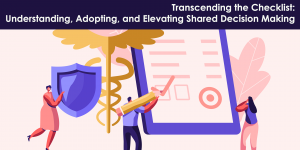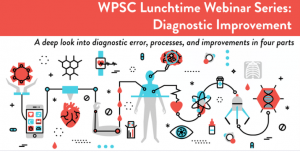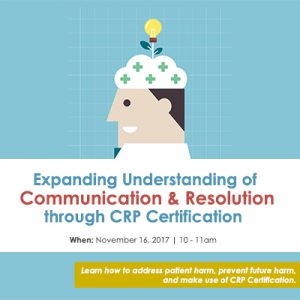
November 16th, 2017 | Expanding Understanding of Communication & Resolution through CRP Certification with Dr. Tom Gallagher, Mike Farrell, Marcia Rhodes, and Dr. Timothy Dellit. Communication and Resolution Programs (CRPs) are the emerging best practice for addressing patient harm when it happens and preventing it in the future. Following a successful CRP Leadership Retreat in September, we want to provide healthcare leaders some guidance on where to go next to learn more about becoming involved in CRP efforts. In particular this webinar will highlight CRP Certification, a unique activity being piloted here in Washington that allows both providers and healthcare organizations an opportunity for focused feedback on their use of a CRP after an episode of care. This webinar is appropriate for front-line clinicians, hospital administrators, and anyone involved or interested in reshaping responses to patient harm while also making strides to prevent it.
The Bias & Inequities Series
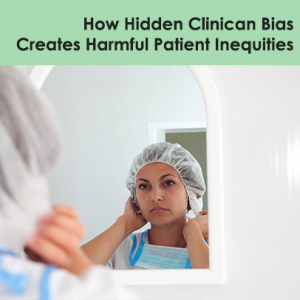
October 4th, 2017 | How Clinician Bias May Contribute to Health Inequities with Nancy Fisher of CMS. How can unintentional clinician bias manifest into patient harm? What about more overt bias? Dr. Nancy Fisher, known affectionately by many as Doc Nancy, has spent much of her career trying to address harmful bias and the health inequities it causes. In her philosophy, medicine is not just a science, but an art, an interpersonal relationship, and a communication process, much of which is non-verbal. Without these elements, poor quality of care ensues – in itself a health inequity. In this webinar, Dr. Nancy Fisher will explore these ideas in sharing how bias, by putting an inaccurate focus on a patient’s identity, actually results in making care less patient-centered. More importantly, she will explore how bias can be identified and addressed on the pathway to fixing this often hidden, yet extremely critical issue. This webinar is appropriate for front-line clinicians, patient safety and quality administrators, and anyone involved or interested in making strides in solving biases and inequities in the healthcare system.
SLIDE LINK: The slides from this webinar can be found here.
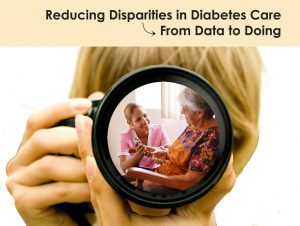
September 21st, 2017 | Reducing Disparities in Diabetes Care: From Data to Doing with Lisa Packard of Qualis Health. It’s no secret that for those in historically underserved populations, daily management of health conditions poses unique challenges. In this webinar, we looked at these challenges through the lens of health equity and social determinants of health with a focus on diabetes, a hugely prevalent disease that is widely known to disproportionately affect underserved populations. Presenter Lisa Packard, who has spent years focused on health inequities and diabetes, shared how diabetes patients can take charge of their health through community-based workshops teaching positive self-management techniques. She also went over how healthcare professionals can help support these individuals, foster the linkages between communities and clinics/health systems, and find or implement these kinds of trainings – particularly the evidence-backed Diabetes Self-Management Program (DSMP) workshops. Lisa also reviewed the evidence behind the Diabetes Prevention Program (DPP) and quality improvement opportunities that can be identified using Medicare claims data. This webinar was appropriate for front-line clinicians, patient safety and quality improvement professionals, and anyone involved or interested in making strides in health disparities and/or diabetes work.
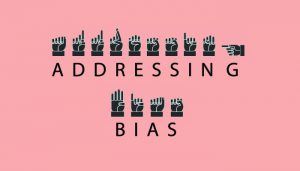
June 28th, 2017 | Addressing Bias, Language Barriers, and Inequities in Healthcare with Cheri Wilson of IHI. Have you ever wondered why sometimes our thoughts don’t match our actions? In this interactive webinar, participants learned more about implicit bias and how it affects our everyday lives in everything from healthcare and beyond, to areas of criminal justice, employment, housing, and media. Most importantly, participants were equipped with tips and debiasing techniques for mitigating implicit bias as a strategy for reducing disparities in health and healthcare and for promoting health equity. This webinar was appropriate for front-line clinicians, patient safety and quality improvement professionals, and anyone involved or interested in making strides in health equity work.
The Workplace Safety Series
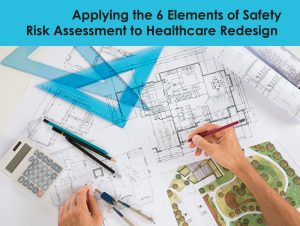
March 29th, 2017 | Applying the 6 Elements of Safety Risk Assessment to Healthcare Redesign with David Frum of Salus Architecture and Mary McHugh of the Northwest Kidney Centers. According to researchers with the Agency for Healthcare Research and Quality, there is a growing evidence-base that “designing for safety and quality can improve patient outcomes and safety, promote healing, increase patient satisfaction, and reduce costs.” David Frum and Mary McHugh joined us to share lessons about this important element of safety culture that is too often overlooked. The webinar focused on defining the Center for Health Design’s 6 elements of Safety Risk Assessment – Infection Control, Patient Handling, Medication Safety, Falls, Behavioral Health, and Security – and illustrated how they can be applied to the design of medical environments. In particular, having worked closely on a project redesigning an outpatient setting at the Northwest Kidney Centers, the speakers provided real-world examples of how these elements have been applied to a dialysis clinic, though the concepts were applicable to other medical settings as well. This webinar was appropriate for hospital and clinic administrators, nursing leaders, facility design professionals, employee health professionals, quality improvement professionals, infection prevention professionals, pharmacists, safety officers, and anyone involved in a healthcare setting who was interested in getting an in-depth look at Safety Risk Assessment, healthcare redesign, and human factors engineering with compelling first-person examples.
SLIDE LINK: The slides from this webinar can be found here
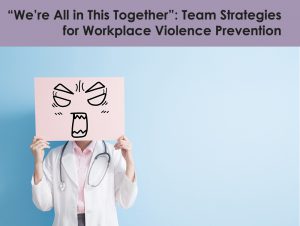
February 22nd, 2017 | “We’re All in This Together”: Team Strategies for Workplace Violence Prevention with Dr. Nan Yragui of the Washington State Department of Labor and Industries. According to the Bureau of Labor Statistics, workers in healthcare and social assistance settings are 5 times more likely to be victims of nonfatal violent acts than the average worker in any other occupation, with ER nurses being at the highest risk and prevalence unfortunately on the rise. In light of these facts, this important webinar shared proven, high-performing strategies for healthcare teams to employ in preventing workplace violence and promoting a culture of safety for both patients and staff. Dr. Yragui, who has spent years dedicated to studying workplace aggression, introduced lessons learned from a qualitative study conducted by herself and her SHARP research team, findings from nursing staff focus groups and supervisor interviews, team support strategies for safety, and how patient safety is linked to staff safety through these prevention strategies. This webinar was appropriate for nurses, front-line clinicians, physicians, hospital administrators, and anyone involved in a healthcare setting who would like to arm themselves with valuable knowledge for enhancing safety culture in the workplace.


